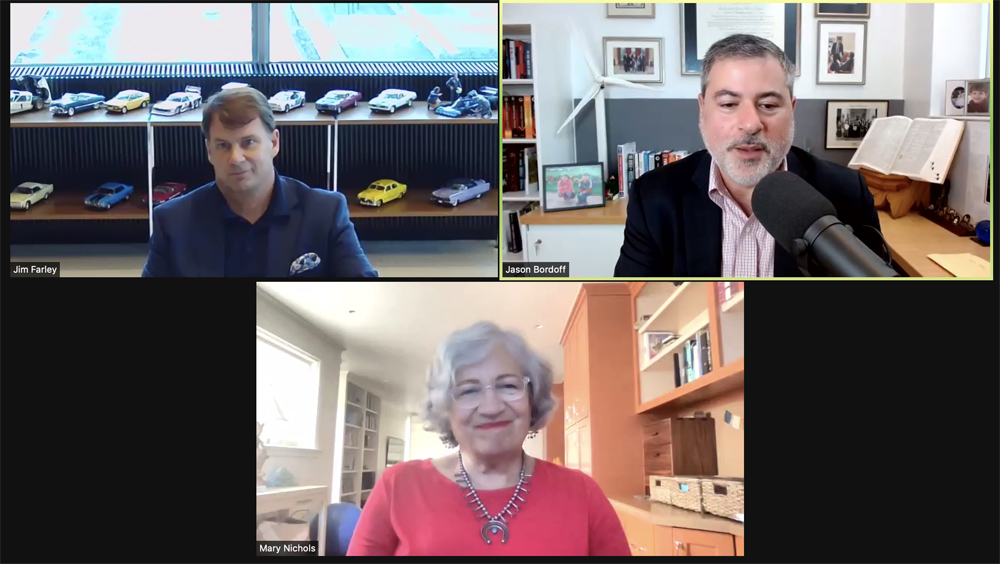New Orleans Mayor LaToya Cantrell appears to be in lockstep with the city council’s desire for a more resilient electric grid following Hurricane Ida’s destruction.
Cantrell, a speaker during Wednesday’s virtual session of North America Smart Energy Week, used the opportunity to call for grid reinforcements, new transmission lines, microgrids and renewable energy. The event was originally slated to be held in New Orleans but was forced into a virtual format by Hurricane Ida.
Cantrell’s comments follow the New Orleans City Council’s recent ask for regulatory investigations into Entergy’s transmission planning and commission of a study of a new utility structure for the city. (See New Orleans Seeks FERC Inquiry into Entergy Planning Practices; Facing City Council Inquiry, Entergy Says it Could Sell New Orleans Utility Arm.)
Cantrell refrained from using Entergy’s name, but she said the 12 hours Ida spent over the city made clear that the grid needs work to prevent future storm-driven outages. She said while the city’s levees and sewerage authority “held the line,” the city’s energy infrastructure did not fare well.
“We saw that our investments in our levees and infrastructure protected the city from flooding,” she said. “At the same time, though, with the entire city losing power, we saw that our electric grid is in need of much, much investment.”
Cantrell called for a transmission buildout and localized renewable resources.
“Our power infrastructure should definitely include a mix of regional transmission and planning and local generation … That’s what we saw and learned firsthand,” she said. “And we must include … renewable energy in the planning so that New Orleans truly can be more resilient and sustainable.”
Cantrell said the city is focused on turning vacant lots into utility-scale solar installations. She also said the city is installing new, more efficient turbines to serve the city’s Sewerage and Water Board.
She said her administration is focused on establishing a series of microgrids with renewable energy sources across hubs that the city used as disaster shelters.
“I’m looking for power lines to be underground,” she added.
New Orleans has a plan to halve its carbon emissions by 2035 and become carbon neutral by 2050. Entergy has said it wants to achieve net-zero emissions by 2050.
Cantrell’s comments run counter to those of Entergy Louisiana CEO Phillip May. He said transmission reinforcements, solar generation and microgrids would not have withstood Ida any better, nor would they have made for a swifter restoration in New Orleans. (See Entergy Fends Off Calls for Tx, Solar, Microgrid Investment.)
Entergy is also defending itself against accusations that it’s resisting MISO’s efforts to approve billions of dollars in new transmission that could bring competing energy suppliers into its service territory. (See Tensions Boil over MISO South Attitudes on Long-range Transmission Planning.)
Prolonged power outages aside, Cantrell said storm-hardening of other city infrastructure worked as designed during Ida.
“When I think about where we were 16 years ago, we’re nowhere where we were before, so that’s a good thing,” she said, referencing Hurricane Katrina’s 2005 strike.
Cantrell recalled that soon after Katrina, city planners recommended that her Broadmoor neighborhood not be restored and instead be converted into one of several new drainage areas. A neighborhood organization president at the time, she said those plans deepened her community involvement.
“All hell broke loose,” she said. “We absolutely moved into activation, proclaiming that Broadmoor would live and we would not become a drainage park. But we would adapt ourselves to mitigating flooding, embracing green infrastructure, and that’s what we did.”
New Orleans is interested in all forms of innovation to address climate change and achieve a carbon-free future, Cantrell said. She said the city welcomes new ideas in water management, battery development and electric vehicles.
“Come to New Orleans,” she said. “We’re a place to build and test your solutions.”


